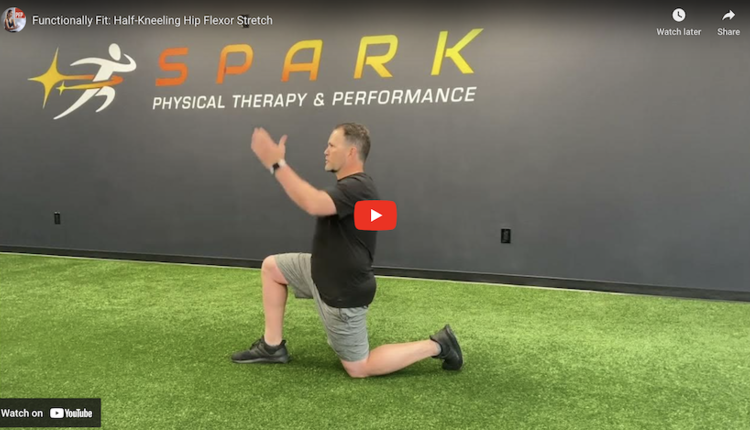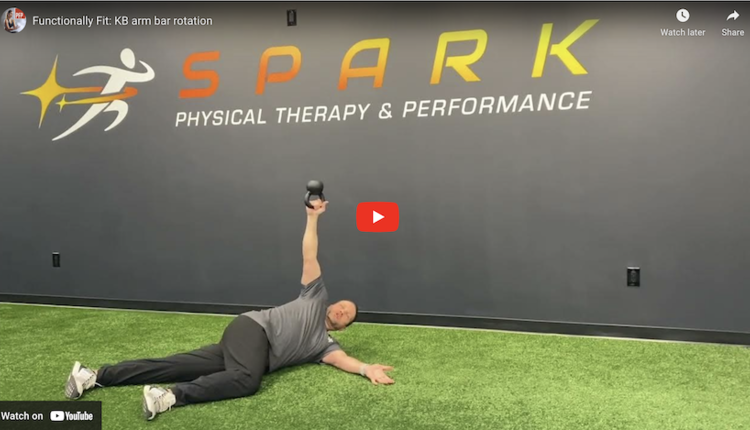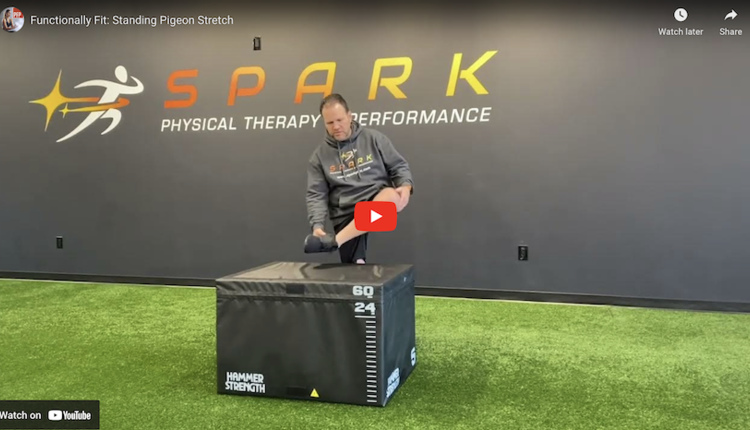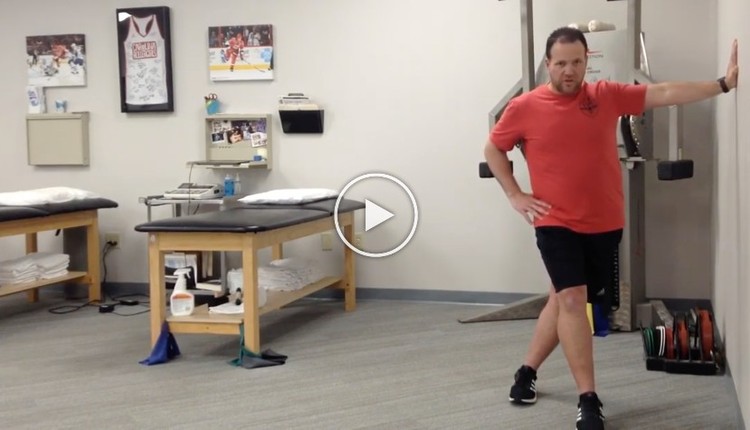Gluteus medius weakness is a common problem with those suffering chronic and acute low back, hip and knee pain. It is also common to see gluteus medium dysfunction in runners. In many cases, the tensor fascia lata (TFL) muscle is synergistically dominant and overpowers the gluteus medius. This exercise will target the gluteus medius while using a simple visual cue to help eliminate TFL dominance.

Execution: Place an elastic loop or mini-band around the ankles. Lying on the left side with the left elbow propped beneath the left shoulder, flex the left hip to about 45 degrees, while flexing the left knee to 90 degrees. Ensure that the pelvis and lumbar spine are in a neutral position. Keeping the right knee straight and right foot in dorsiflexion, slowly raise the right leg. Pause at the top for one second, and then slowly lower back down. Repeat for 10-15 repetitions and then switch sides.
During the leg raises, be sure to watch for compensatory motions, namely pelvic rotation and the top leg moving into hip flexion instead of pure abduction. Flexing the bottom hip 45 degrees will provide a visual separation between the legs, and cueing the client to keep the top leg in line with the body in a straight line running from the outside of the ankle up tot the ear should help. The TFL will kick in when the gluteus medius drops out and this will draw the top leg into more flexion.
For advanced clientele, increase the hold times, cadence or strength of the resistance band. To regress the exercise, decrease the resistance and/or move the elastic band up to a point above or below the knees based on the client’s ability.
Application: This exercise is an effective way to target the gluteus medius while discouraging synergistic dominance from the TFL. The resistance band will tax the muscle harder than a traditional ankle weight, but using the visual cue of the flexed down hip/knee will allow the client to self police his/her form and know when compensations are occurring. Since this is an open chain exercise, it allows for a more isolated strengthening approach, and can serve as an effective complement to closed change multi-joint strengthening for those with clear gluteus medius weakness.




















